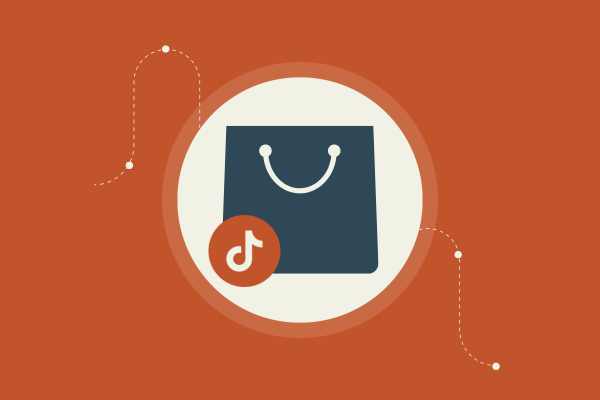Customer Retention Metrics Every eCommerce Entrepreneur Should Track: The Secret Sauce to Boost Profits
Listen up! If you're diving into eCommerce, you can't overlook customer retention. It's the secret sauce for your business's long-term success. Focusing on customer retention metrics will push your growth to levels you never imagined. You'll keep customers coming back for more and spending more, too.
Tracking the right metrics means knowing exactly what keeps your customers around. Things like churn rate and Net Promoter Score® are crucial. These numbers tell you how healthy your customer relationships are and where your business stands.
Why stop at just keeping them around? You want to maximize their spending every time they shop. Dive deep into customer lifetime value and fine-tune your strategies to make sure you're not leaving money on the table. Leveraging feedback loops gives you an edge in adapting quickly and keeping up with market changes.
Key Takeaways
Use customer retention metrics to boost growth.
Analyze customer behavior to improve strategies.
Maximize customer value and financial health.
Understanding Customer Retention
In eCommerce, keeping your customers coming back is crucial. It’s not just about making that first sale. It’s about turning buyers into loyal fans who keep choosing you over others.
Defining Customer Retention
Customer retention is all about how well you keep customers coming back for more. It's important to focus on their entire journey. From the moment they first see your product until they buy again, it matters. Customer experience is key. Happy customers become repeat customers, and that helps your business grow.
You can't leave this to chance. Customer retention involves strategies like excellent customer relationship management and dealing with any issues quickly. Think of it as building a lasting relationship. You want them to feel valued every step of their journey.
The Why Behind Tracking Retention Metrics
Why bother with metrics? Because they tell you if you're winning or losing. When you track things like customer churn, you see who’s sticking around and who’s dropping off. This is crucial. Losing customers means you're doing something wrong.
By keeping an eye on these numbers, you can spot where your customer experience might need some help. Metrics help you improve that experience. And bettering the experience means more loyal customers and less churn. It also helps with planning for growth, scaling your operations, and even deciding where you could cut costs.
Core Customer Retention Metrics
If you're an eCommerce entrepreneur, understanding customer retention metrics is key to keeping your business healthy. These metrics will help you see how well you're holding onto customers.
Customer Retention Rate (CRR)
Customer Retention Rate (CRR) is a must-know figure in your business toolkit. It shows the percentage of customers you keep over time. To calculate it, pick a time period, find out how many customers you had at the start and end, and then figure out how many new customers you’ve gained in between. The formula is:
CRR = ((End Customers - New Customers)/ Start Customers) x 100
A high CRR means you're doing a great job keeping your customers happy and loyal.
Want to watch those numbers climb? Focus on giving top-notch customer service and create loyalty programs. These little shifts can boost your CRR significantly. And remember, it's cheaper and easier to retain a customer than get a new one.
Customer Churn Rate
Customer Churn Rate is like looking in the rearview mirror. It tells you what percentage of customers you've lost over a specific period. In simple terms, it's the opposite of your retention rate. Calculate it using:
Churn Rate = (Lost Customers / Total Customers at Start) x 100
Your goal should be to keep this number as low as possible. It's like a leaky bucket that you need to patch up. Figure out why customers leave, and then make the necessary changes. It could be anything from better customer support, improved product offerings, or even pricing adjustments.
Revenue Churn Rate
Revenue Churn Rate is all about the dollars and cents you're missing out on when customers say goodbye. This metric focuses on the loss of revenue from existing customers during a period. Calculate it like this:
Revenue Churn Rate = (Revenue Lost from Churned Customers / Total Revenue at Start) x 100
Revenue churn digs deeper than customer churn because it highlights lost value from bigger spenders. Reduce this by offering upgrades, upsells, or personalized discounts to keep high-value customers engaged. Keep an eye on this metric, and work to plug any gaps that could be costing you big bucks.
Deep Dive Into Customer Value
Understanding customer value is crucial for boosting your eCommerce business. Focus on metrics like Customer Lifetime Value, Average Order Value, and Repeat Purchase Rate to drive growth and maximize profits.
Customer Lifetime Value (CLV)
You might ask, what exactly is Customer Lifetime Value (CLV)? It's the total worth of a customer to your business over the entire relationship. You gotta know this because it helps you figure out how much to spend on customer acquisition. When you understand your CLV, you can create killer strategies to increase it.
Start by calculating the average purchase value and frequency. Multiply these by the average customer lifespan. Now you've got your CLV! Boost it by enhancing the customer experience. Loyal customers stick around longer, and that's money in the bank.
Average Order Value (AOV)
Average Order Value (AOV) measures the average amount spent each time a customer places an order. It's a sign of how well you're getting customers to spend more. To calculate, divide total revenue by the number of orders. Simple, right?
How do you bump up that AOV? Encourage upsells and cross-sells. Bundle products together. Offer free shipping over a certain amount. Each of these tactics can lead to bigger sales. Bigger sales equal more profit. Focus on AOV, and you might just see your eCommerce business thrive.
Repeat Purchase Rate (RPR)
Repeat Purchase Rate (RPR) tells you what percentage of customers return to buy again. High RPR? You're doing something right. Low RPR? Time to dig deep and make improvements. Calculate RPR by dividing repeat customers by total customers.
Aim for strong RPR by building relationships and trust. Use personalized marketing and provide exceptional support. Email follow-ups can nudge customers back. Certificates of authenticity and guarantees can also work wonders. Remember, the goal is to keep customers coming back, filling their carts, and checking out time and again.
The Feedback Loop
Getting feedback is gold for any eCommerce business. It helps you understand your customers’ thoughts and improve your services. Let's dive into how you can use specific scores and feedback to grow.
Net Promoter Score (NPS)
NPS is the ultimate question: "How likely are you to recommend us to a friend?" Your score can reveal a lot about your brand's health. High scores mean loyal customers who'll spread the word. Low scores? They signal it's time to rethink strategies.
NPS ranges from -100 to 100. You separate responses into Promoters, Passives, and Detractors. Focus on turning Detractors into Promoters. Use this feedback to push your business forward. It’s like having a roadmap to customer happiness and business growth.
Customer Satisfaction Score (CSAT)
CSAT measures how happy customers are with a specific interaction or product. Easy to get, just ask: "Rate your satisfaction from 1 to 5?" The goal? High scores. But don't stress if it's not perfect. It's an ongoing journey.
CSAT is great for spotting short-term problems. Fix those small issues before they become big headaches. By consistently gathering CSAT data, you’re always in the loop about what’s working and what needs tweaking.
Customer Feedback and Engagement
Feedback is your chance to hear directly from your customers. Customer feedback offers insights into their needs and engagement levels. Jump on every opportunity to gather their thoughts. Use surveys, social media, or email.
Encourage two-way communication and let them know you’re listening. Act on it! When customers see changes based on their input, engagement naturally increases. It’s like adding fuel to a fire. They’ll feel connected and valued, turning them into loyal fans.
Maximizing Customer Spend
To boost your eCommerce profits, you need to focus on strategies that increase the amount each customer spends. Getting them to buy more in one transaction is key. You want to make sure they're also coming back for more in the future. Here's how you do it.
Upselling and Cross-Selling
Upselling and cross-selling are your secret weapons. Upselling encourages customers to buy a more expensive version of a product they’re considering. Cross-selling persuades them to add related items. Think of it as getting a burger and fries with your sandwich. It dramatically increases the average order value.
Make sure to suggest products that make sense. If a customer adds a laptop to their cart, offer a laptop case or additional RAM. When done right, it feels natural and helpful, not pushy.
Position these offers at strategic points in the shopping journey—like during checkout. Your goal here is to enhance the customer experience. This not only boosts spending but also solidifies trust, making them more likely to come back.
Loyalty Programs and Rewards
Loyalty programs are crucial in maximizing what a customer spends over time. They keep customers coming back and spending more by rewarding them for loyalty. Everybody loves a reward—especially when it comes to free stuff or discounts.
Create a program where customers earn points for every purchase. These points can be redeemed for discounts or products. Make sure the rewards are appealing and reachable.
Aim to increase the customer's lifetime value (LTV). This means they’ll spend more over the long term. Keeping it simple: more visits translate into dollars in your pocket. A solid loyalty program is a win-win for both you and your customers. They feel valued, and you enjoy the extra cash flow.
Strategies for Customer Retention
To boost customer retention, focus on smart marketing, more frequent purchases, and great service. Making these areas shine can transform occasional buyers into loyal fans. Let's dive into what you can do.
Crafting Effective Marketing Campaigns
Marketing isn't just about selling—it's about connection. You need campaigns that engage and entertain. By using data-driven insights, you can tailor your messages to fit your customers' needs. Personalization is key.
Email campaigns, for example, can remind customers why they love you. Offer them special deals, freebies, or sneak peeks. Don't be afraid to inject fun and creativity. Your goal is to be memorable.
Social media is your playground too. Engage with your audience by sharing insightful content. Run contests that encourage participation. Creative posts can boost engagement and keep your brand top-of-mind.
Enhancing the Purchase Frequency
Crank up the number of times customers buy from you. Subscription models work wonders here. They offer convenience and keep customers coming back automatically. Loyalty programs with points and rewards are another route.
Think about bundling products. When you bundle, you're giving more value. Customers often like to get more bang for their buck. Encourage repeat purchases by delivering consistent quality.
Promotions tied to specific purchase frequencies can pique interest too. Limited-time deals or special offers for returning customers can motivate them to buy more often. Remember, consistent shoppers are happy shoppers.
Reducing Time Between Purchases
Shortening the gap between purchases is crucial. To do this, examine your customers' buying habits. Identify the gaps and design strategies to fill them. Offer incentives for quicker returns, like discounts on their next purchase.
Keep them hooked with engaging content. Regular updates and newsletters keep everyone in the loop. Send reminders tailored to their previous purchases and preferences.
Leverage feedback to improve product offerings. If customers love what they get, they'll come back sooner rather than later. Encourage quick re-engagement with ease of access and seamless experiences.
Exceptional Customer Service
Customer service can make or break retention. Exceptional service turns a one-time buyer into a lifelong customer. Train your staff to listen and respond promptly. Address issues swiftly and effectively.
Use every interaction as an opportunity to impress. Personal touches in communication show care and build loyalty. Follow-ups can turn a sour experience into a sweet one.
Utilize multiple channels. Whether it's chat, email, or phone, ensure customers can easily reach you. Quick resolutions and a friendly touch can win hearts and boost retention. Make your service so good they can't forget you.
Analyzing and Improving Performance
To make your eCommerce business thrive, it's crucial to keep an eye on important numbers. Look into your KPIs to see what’s working and what’s not. Use these insights to make decisions that push your business forward.
Evaluating Key Performance Indicators (KPIs)
Your KPIs are like a report card for your business. Focus on metrics like conversion rate, customer acquisition cost (CAC), and net promoter score (NPS). These numbers tell you how well you're turning visitors into buyers, how much you spend to get a customer, and what customers think of you.
Conversion rate shows the percentage of visitors who actually buy something. If your rate is low, maybe your website needs a tweak. CAC measures how much you’re spending to attract new customers. A lower CAC means you're spending your money wisely. NPS reflects customer satisfaction and loyalty. A high score means happy customers who might bring friends.
Track and compare these numbers regularly. Use dashboards or tools to get a clear picture. Once you know where you stand, taking action becomes easier.
Making Data-Driven Decisions
Using data is like having a roadmap for your business. Don’t just guess—let the numbers guide you. When you see a dip in ROI, dig into the data to find out why.
Less guessing, more knowing.
Start by looking at the trends. If conversion rates are down, check if it's linked to a specific time or product.
Adjust your strategy based on these findings. Maybe you need to tweak a marketing campaign or change up your product listings.
Data-driven decisions help prioritize what needs changing. Focus on areas with the most impact.
When you use data to guide your actions, your decisions are sharper and lead to better results. It’s all about making smart moves that count.
Additional Metrics for eCommerce Excellence
If you're looking for next-level growth in your eCommerce business, you need to focus on some key metrics. Understanding these numbers can make or break your game. It’s not just about sales, it’s about optimization and efficiency.
Monthly Recurring Revenue (MRR)
Relying solely on one-time purchases? Think again. Monthly Recurring Revenue (MRR) is your path to predicting future cash flow. MRR is the consistent revenue you can expect each month from subscription services or repeat purchases.
Why is MRR important? Simple—it’s predictable. You can plan your budget, reinvest in marketing, or upgrade inventory with a clear view of future income.
Focus on boosting MRR through loyalty programs or subscription models. This is a game-changer for long-term stability.
Pay attention to both growth and retention of subscribers to keep this metric healthy. The more stable your MRR, the more freedom you have to innovate and expand.
Cart Abandonment Rate
Cart abandonment is like leaving money on the table. It's when a customer adds items to their cart but doesn't complete the purchase. Measuring the cart abandonment rate helps identify hurdles in the shopping process.
This rate is calculated by dividing the number of completed purchases by the number of shopping carts created, then multiplying by 100.
Lowering this rate can boost sales significantly. Fine-tune your checkout process to get this number down.
Simplify navigation, offer multiple payment options, or use exit-intent popups for a gentle nudge. Even tiny tweaks can lead to big payoffs.
Product Return Rate
You hate it, I hate it, everyone hates product returns. High product return rates can signal issues with quality or customer satisfaction. Calculate this by dividing the number of products returned by the number of products sold, then multiply by 100.
Why should you care? Returns affect your bottom line and customer trust.
Analyze reasons for returns and take proactive steps to reduce them. Clear product descriptions, high-quality images, and customer reviews can help manage expectations.
Keep this rate low to maintain profitability. Achieving a low return rate isn't just about avoiding problems; it's about building customer loyalty and trust.
Inventory Turnover Rate
Your inventory should fly off the shelves, not gather dust. Inventory Turnover Rate tells you how often your inventory is sold and replaced over a given period. It’s calculated by dividing the cost of goods sold by the average inventory value.
A high turnover rate means you’re doing something right. It suggests you're aligning closely with market needs and managing stock efficiently.
A low rate, though, indicates excess stock. Optimize stock levels by tracking seasonal trends and customer preferences.
Focus on high-demand items for quick turnovers. This strategy minimizes holding costs and maximizes revenue. Keep that stock moving and always stay agile in your operations.
Keeping an Eye on the Market
In the fast-paced world of eCommerce, staying tuned to what's happening in the market is your secret weapon. You'll want to follow market trends and adapt to how your customers behave.
Assessing Market Trends
You’ve got to know what's hot and what's not. Keeping track of market trends can give you a big edge. Use tools like Google Trends to see what people are searching for. Discover which products or services are growing in popularity.
Analyze data from your traffic sources to understand where your visitors are coming from. Are they finding you through social media, search engines, or email campaigns? This can help you tweak your marketing strategies.
Keep an eye on your website traffic. Check if there are spikes or dips during certain times of the year.
Seasonal trends can tell a lot about what your audience wants. Adjust your offerings accordingly to meet demand.
Adjusting to Consumer Behavior
Understanding how your customers behave is crucial. Watch out for what they like and dislike.
Use analytics to see which products they buy often and how they tend to shop online. This can inform your sales strategies.
Track repeat purchase rates to see if your customers keep coming back. Data shows that the average repeat purchase rate is 28.2%. If yours is lower, it might be time to rethink your retention strategies for consistent performance.
Be sure to track customer feedback and reviews. This will give you clues about what you might need to fix or improve.
Let your customers guide you, and you’ll be set for success.







